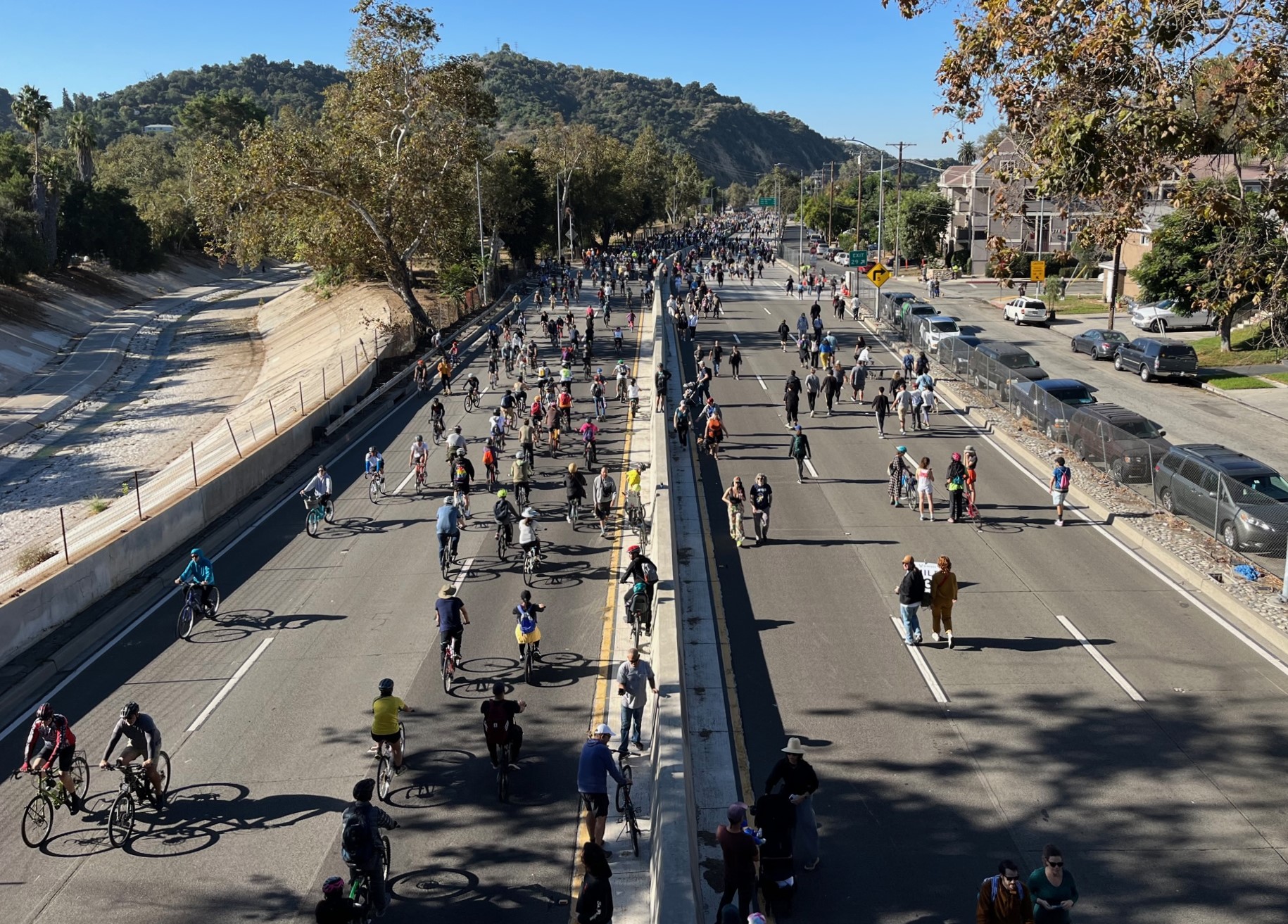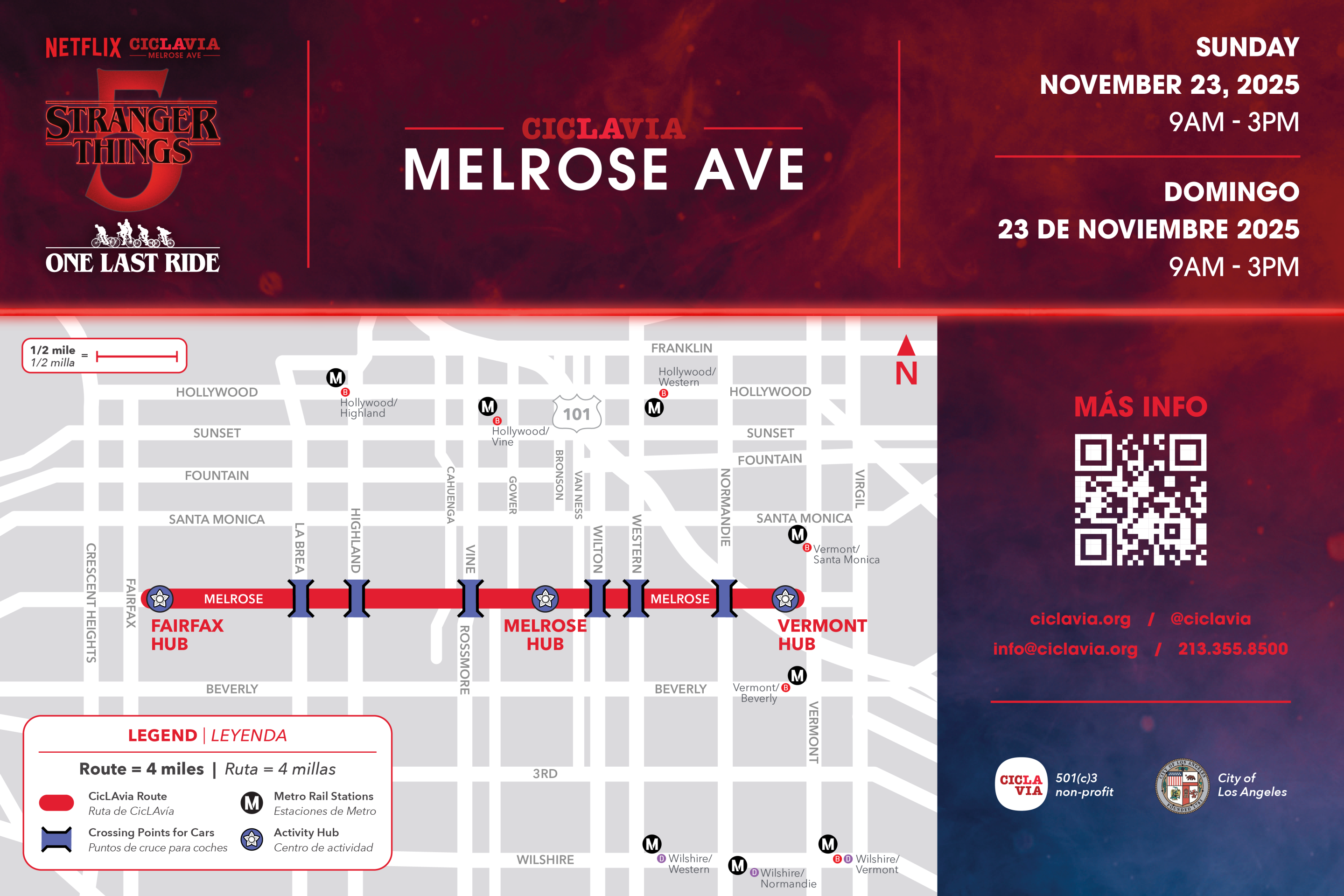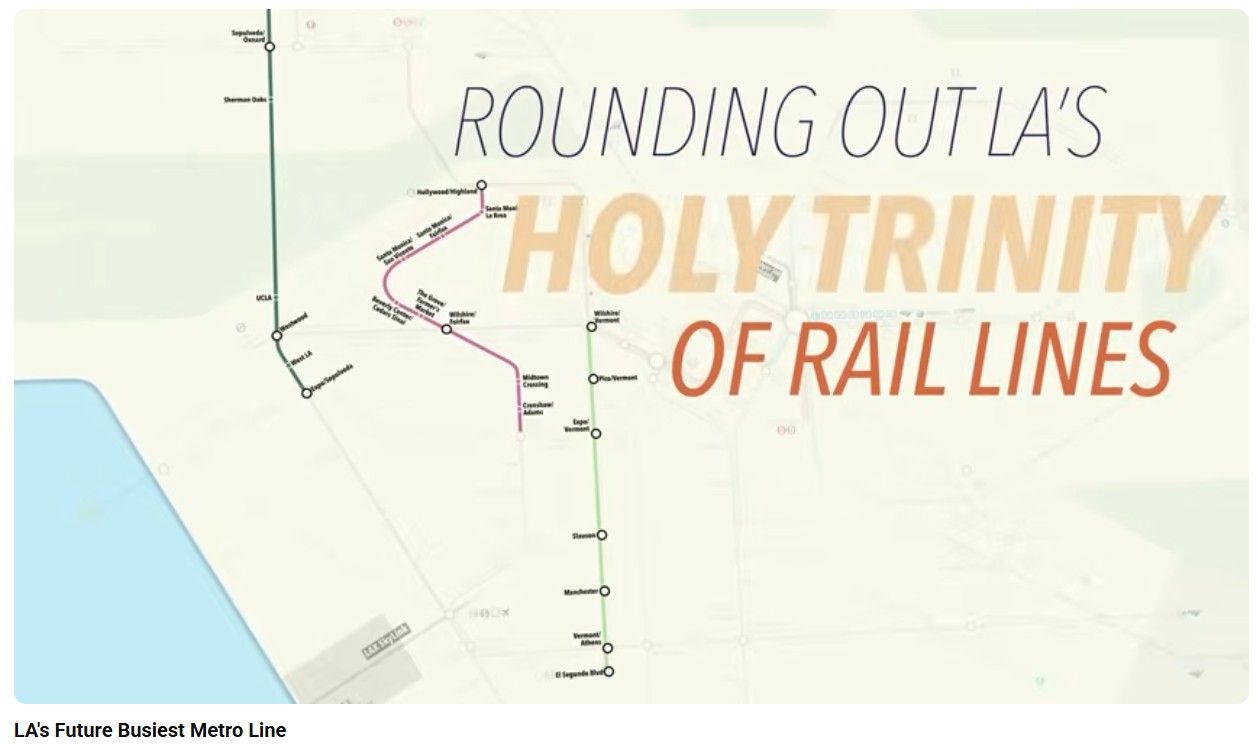(If you don't like my formatting, you can download this article as a pdf., here - DN)
Last month I wrote an article about how important bike parking is
in our urban environment. As long as there is no standard in bike
parking in our city, riding a bike will continue to be considered a
sport not a transportation solution.
Since there are so many
varieties in bike rack designs and so many ways that bikes can be
locked up, I thought it might be a good idea to address the how-to's of
bike parking. These tips might not only help those who consider
installing racks, but also cyclists, who don't want to take a chance on
their bike being stolen or damaged.
Locking up your bike:
When
you arrive at your destination, you will need to lock up your bike.
Very few places in Los Angeles have bike parking so sometimes we have
to be creative if there are no inverted U-racks. Instead, find a rail,
a pole or a tree that is stationary. Make sure that whatever you
choose is high enough that your bike can’t be slipped off (parking
meters are not ideal unless you have a U-Lock). If possible, find a
place to lock your bike where the frame and the front wheel are both
protected.
Location:
Always
important, select a location that is visible to the public, that is
open and allows "eyes on the street" to serve as a deterrant. Avoid
locations that are hidden, tucked away, discrete and remember that it's
not just the bike that is vulnerable, that you also need to avoid
locations that prevent you from being aware and in control of your
personal safety.
How to lock up your bike





I
didn't include the comb or toast bike racks because you shouldn't lock
up to those if you care about your bike. I have a bike that has no
kickstand, so it can't be locked to a toast rack nor to a comb. The
fenders on my bike prevent the tire to even fit into the comb and I
can't keep the frame secure at all. So bike racks that are just not
safe to lock to, I didn't list.
If there is no
bike parking or no safe bike parking at your destination, take your
bike inside. It is not worth taking a chance if you care about your
transportation. There are bike standards that developers need to adhere
to. Putting up with bad bike parking just reinforces those responsible
that cyclists don't matter and that the laws and municipalities can be
bent and ignored. Don't let developers get away with it. You have a
voice and have it be heard, just like we let our voices be heard at the Trader Joe's on Hollywood & Vine.
For a comprehensive guide on locking up your bike, visit my friends at cicle.org, check out the Kryptonite site or find tips on National Bike Registry.
Bike Rack Guidelines (recommendations from the Association of Pedestrian and Bicycle Professionals):

The Rack element should:
- Support the bicycle upright by its frame in two places
- Prevent the wheel of the bicycle from tipping over
- Enable the frame and one or both wheels to be secured
- Support bicycles without a diamond-shaped frame with a horizontal top tube (e.g. a mixte frame)
- Allow front-in parking: a U-lock should be able to lock the front wheel and the down tube of an upright bicycle
- Allow back-in parking: a U-lock should be able to lock the rear wheel and seat tube of the bicycle
Comb, toast, school-yard, and other wheel-bending racks that provide no support for the bicycle frame are NOT recommended.
The
rack element should resist being cut or detached using common hand
tools, especially those that can be concealed in a backpack. Such tools
include bolt cutters, pipe cutters, wrenches, and pry bars.
The
rack should consist of a grouping of rack element. The rack elements
may be attached to a single frame or remain single elements mounted
within close proximity to each other. The rack elements should not be
easily detachable from the rack frame or easily removed from the
mounting surface. The rack should be anchored so that it cannot be
stolen with the bikes attached—vandal-resistant fasteners can be used
to anchor a rack in the ground. An exception is a rack that is so large
and heavy that it cannot be easily moved or lifted with the bicycles
attached.
The rack should provide easy, independent bike access.
Inverted “U” rack elements mounted in a row should be placed on 30”
centers. This allows enough room for two bicycles to be secured to each
rack element. Normally, the handlebar and seat heights will allow two
bicycles to line up side-by-side if one of them is reversed. When there
is a conflict, the bikes can be placed slightly offset from one another
as shown. If the elements are placed too close together, it becomes
difficult to attach two bikes to the same element. If it is too
inconvenient and time consuming to squeeze the bikes into the space and
attach a lock, cyclists will look for an alternative place to park or
use one rack element per bike and reduce the projected parking capacity
by 50 percent.
Wave style racks are not recommended.
Bicyclists commonly use a “wave” rack as if it were a single inverted
“U.” This limits the actual capacity of the rack to two bikes
regardless of the potential or stated capacity. Bicycles parked
perpendicular to a wave rack (as intended by the manufacturer) are not
supported in two places and are more likely to fall over in the rack.
The advertised capacity of a wave rack is usually much higher than the
practical capacity.
An empty rack should not create a tripping hazard for visually impaired individuals.
The Bike Rack Area:

A
rack area or “bicycle parking lot” is an area where more than one rack
is installed. Aisles separate the racks. The aisle is measured from tip
to tip of bike tires across the space between racks. The minimum
separation between aisles should be 48 inches. This provides enough
space for one person to walk one bike.
In high
traffic areas where many users park or retrieve bikes at the same time,
such as a college classroom, the recommended minimum aisle width is 72
inches.

72
inches (six feet) of depth should be allowed for each row of parked
bicycles. Conventional upright bicycles are just less than 72 inches
long and can easily be accommodated in that space. Some rack types will
allow the racks to be mounted closer to the wall. This will not change
the space required by the bicycles or the aisles.
Large rack
areas with a high turnover rate should have more than one entrance.
This will help facilitate the arriving and departing of cyclists and
pedestrians.
If possible, the rack area should be protected from
the elements. Racks along building walls can be sheltered by an awning.
Even though cyclists are exposed to sun, rain, and snow while en route,
covering the rack area keeps the cyclist more comfortable while
parking, locking the bike, and loading or unloading cargo. An awning
will also help keep the bicycle dry, especially the saddle.
The Bike Rack Area Site:
The
location of a rack area in relationship to the building it serves is
very important. The best location for a rack area is immediately
adjacent to the entrance it serves. Racks should not be placed so
that they block the entrance or inhibit pedestrian flow in or out of
the building. Racks that are far from the entrance, hard to find, or
perceived to be vulnerable to vandalism will not be used by most
cyclists.
It is important to understand the transition a cyclist
makes from vehicle to pedestrian. The cyclist approaches the building
mounted on the bicycle.
At some point, the cyclist stops,
dismounts, and walks the bike to a rack. The bicycle is attached to the
rack and any cargo is removed. The cyclist now walks into the building
carrying the cargo. Adequate space must be provided to allow for this
transition. The rack area should be located along a major building
approach line and clearly visible from the approach. The rack area
should be no more than a 30-second walk (120 feet) from the entrance it
serves and should preferably be within 50 feet.
A rack area
should be as close or closer than the nearest car parking space. A rack
area should be clearly visible from the entrance it serves. A rack area
should be provided near each actively used entrance. In general,
multiple buildings should not be served with a combined, distant rack
area. It is preferred to place smaller rack areas in locations that are
more convenient.
You can download the Guidelines with more information here. You can also check out the Bikeoff guidelines online.






